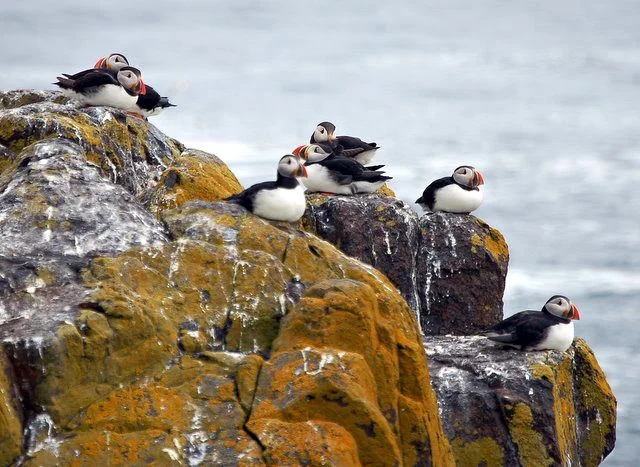Puffin numbers remain stable after spring storm deaths

Puffin numbers on the Isle of May NNR, in the Firth of Forth, have remained similar to 2009, despite severe weather earlier this year, a count by scientists at the Centre for Ecology and Hydrology (CEH) has revealed.
The survey, released on Friday 31 May, indicated that a total of 46,000 burrows showed signs of use by Puffins this spring, an almost identical total to the last count, which was completed in 2009. The count was funded by Scottish Natural Heritage (SNH).
This result is something of a surprise, as earlier this year, severe weather resulted in the deaths of thousands of auks, mainly Puffins, along the coasts of eastern Scotland and north-east England. Examination of the bodies of some of the 3,500 dead Puffins and ringing recoveries suggested that many of the birds involved were breeding adults from local colonies.
David Pickett, Reserve Manager at Isle of May NNR, commented on the reserve blog: “The last count in 2009 also recorded a figure of about 46 000 pairs, so what has happened? Whose Puffins died over the winter?
“What we think might have happened is that since 2008 the Puffin population has been creeping up, but this increase has been chopped by the winter storms so that the population has dropped back to what it was.”
It’s not all good news, however. The count also revealed that the bad weather earlier this year has disrupted this spring’s breeding season, with laying taking place two or three weeks later than usual.
Mr Pickett added: “The effect of that weather is that the Puffins have come back to breed on the island in a very poor condition and so have had to spend a few weeks feeding up to build up their strength for the rigours of the season. This has meant that many have started very late, maybe too late to successfully complete a breeding season.
“What we really need now is a sea full of big sandeels for the adults to be fit and the chicks to grow quickly. But the data collected over the decades show that the sandeel population isn't in a great state either. After the poor breeding season of last year the last thing the Puffins need is another bad one.”
The Isle of May NNR is home to the largest colony of Puffins in the North Sea and has been the main centre of the British science community’s research into Puffins for nearly four decades. Images of dead and dying birds had resulted in great concern about the future of the major Puffin breeding colonies in the region, especially since there was a 30 per cent decline in the species' numbers on the Isle of May between 2003 and 2009.

